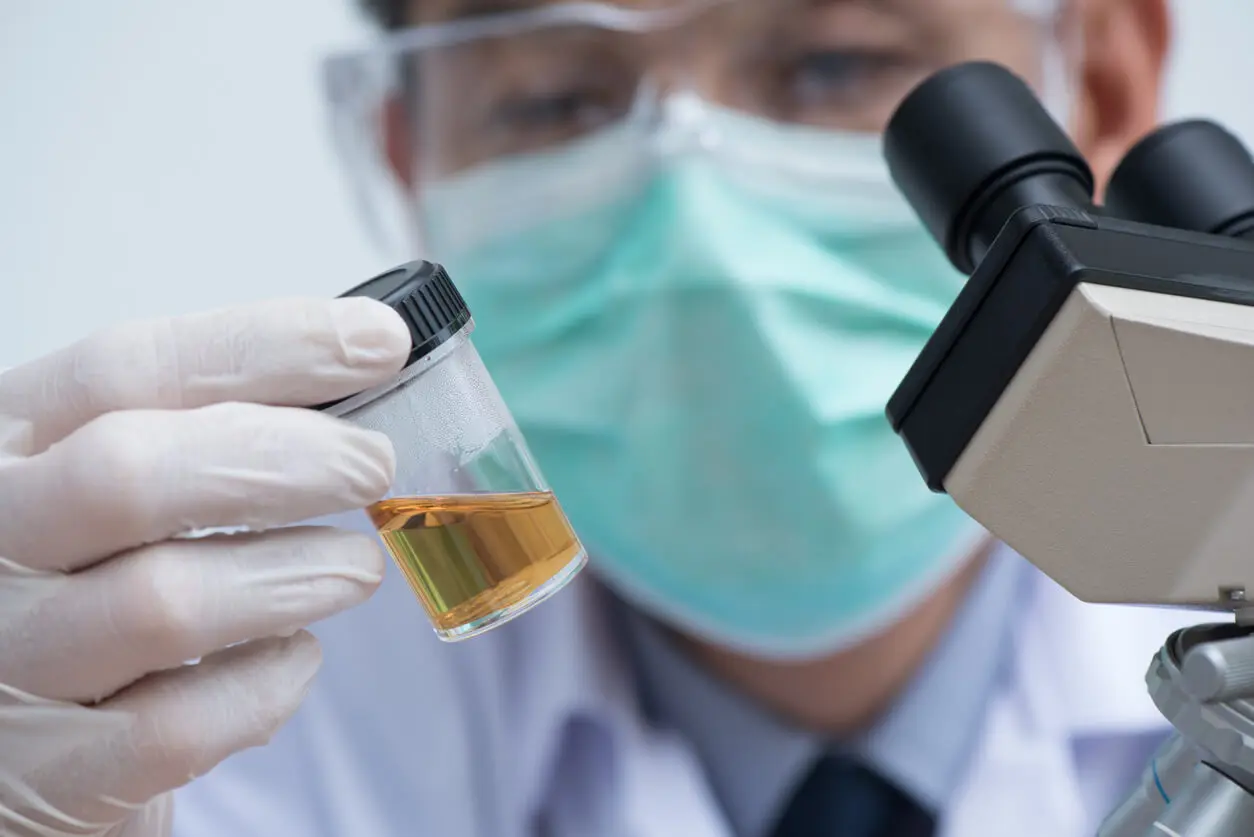Scrotal Masses or Lumps: Causes, Symptoms, and Treatments


Reviewed and approved by the nurse Leidy Mora Molina
Scrotal masses or lumps are lumps that arise from a variety of causes. The scrotum is the sac of skin that contains the testicles. Sometimes, lumps form there that contain fluid or other tissue. They can also be the result of inflammation.
In most cases, they’re benign (non-cancerous). However, these lumps can also be a sign of testicular cancer. That’s why they should never be ignored.
The important thing is that almost all of these masses or lumps in the scrotum can be successfully treated. Even testicular cancer has a very good prognosis if detected and addressed early.
What do scrotal masses or lumps look like?
The size of these lumps varies greatly. Sometimes, they’re only the size of a pea, and sometimes they grow much larger.
Most are soft in consistency because they’re filled with fluid. They often always lead to a swollen scrotum. When they have these characteristics, they’re usually harmless and usually disappear on their own.
When these masses have a hard consistency, it’s possible that it’s a more serious problem. They are usually the result of abnormal tissue growth in the scrotum. Even if they don’t cause pain or discomfort, they still may be dangerous.
We think you may also enjoy reading this article: Testicular Cancer: The Disease that Borussia Dortmund’s Sebastien Haller Has
Why do scrotal lumps or masses form?
Masses or lumps in the scrotum arise for a variety of reasons. The main reasons are the following.
Orchitis
Orchitis is inflammation of the testicle. It originates from a bacterial or viral infection.
It usually occurs in only one testicle, although it’s also possible to affect both testicles. This condition is often associated with mumps and can cause infertility.
Epididymitis
Epididymitis is inflammation of the epididymis. This is a tube that connects the testicles to the vas deferens, through which semen circulates.
The cause is usually a bacterial infection and, in people under 35 years of age, a sexually transmitted disease. Very rarely, urine flows into the epididymis and causes the infection known as chemical epididymitis.
Hydrocele
A hydrocele occurs when one of the sacs surrounding the testicle fills with fluid. Usually, such sacs contain only a small amount of fluid. When this fluid accumulates in excess, it causes masses or lumps in the scrotum.
Hematocele
Hematocele is similar to hydrocele, but in this case, the sacs surrounding the testicle fill with blood. This condition is almost always associated with surgery or a previous blow.
Spermatocele can cause scrotal masses
The spermatocele is a benign and almost always harmless cyst that appears near one of the testicles. The problem is that these cysts become very large in volume, and this can make them very uncomfortable, even if they don’t cause pain. They are also called epididymal cyst or spermatic cyst.
Varicocele
Varicocele is another cause of masses or lumps in the scrotum. This is an enlarged vein, which almost always appears in the left testicle.
It’s usually asymptomatic. However, there are cases in which it generates pain and affects fertility.
Inguinal hernia
An inguinal hernia is a bulge that forms in the groin. It occurs because a part of the intestinal or fatty tissue protrudes through a weak point in the abdominal muscles.
This can be detected as masses or lumps in the scrotum. Sometimes it does not cause pain, but at other times it does, especially when lifting something heavy, coughing, or bending over.
Like this article? You may also like to read: Common Diseases of the Penis and Their Treatment
Testicular torsion can cause scrotal masses
Testicular torsion occurs when the spermatic cord is twisted. This is a tube that connects the penis to the testicles.
The condition is rare and more common in adolescents. It causes severe pain and is a surgical emergency. If not treated in time, it could lead to the loss of the testicles.
Testicular cancer
Testicular cancer is uncommon and another reason why masses or lumps appear in the scrotum. It’s most common in men between the ages of 15 and 35.
Although it’s a dangerous disease, it can almost always be treated and overcome. The most important thing is that it’s detected early.
Symptoms and diagnosis
The symptoms of masses or lumps in the scrotum depending on the underlying cause. Sometimes they don’t cause any symptoms and are barely noticeable. Other times, they’re quite noticeable and cause a lot of discomfort.
Generally speaking, the symptoms of scrotal masses or lumps are as follows:
- Tenderness of the testicles
- Hard or swollen testicles
- Redness of the skin in the area
- Enlargement or bulging of the scrotum
- Pain extending from the groin to the abdomen or back
Sometimes there may be a fever or more frequent urination if the cause is an infection. There may also be blood or pus in the urine.
Tests performed to diagnose scrotal masses or lumps are as follows:
- An ultrasound
- Transillumination
- A CT scan
- Urinalysis and blood tests, if an infection is present
- A tumor marker test (a type of blood test)

Treatment
Treatment of scrotal masses or lumps depends on the cause. However, it’s almost always simple and non-invasive.
In general, if the origin is an infection that’s causing a condition like orchitis or epididymitis, antibiotics are used. Pain is controlled with analgesics and ice packs.
When dealing with masses or lumps in the scrotum of benign origin, each patient should be evaluated. Sometimes, nothing needs to be done. Other times, drainage, repair, or surgical removal is performed.
In the case of testicular cancer, it’s treated with surgery, chemotherapy, and radiation therapy. All three treatments may be used, but often one or two are enough.
When to see a doctor about scrotal masses or lumps
Lumps in the scrotum should never be overlooked.
To make sure they don’t go unnoticed, it’s best to learn how to perform a testicular self-examination. This is a simple procedure that helps a person to detect abnormalities early.
It’s also best to always wear condoms or other barrier methods when having sex. Also, make sure to protect your testicles with a cup during sports. If anything abnormal is detected in the scrotum, it’s best to consult a doctor as soon as possible.
All cited sources were thoroughly reviewed by our team to ensure their quality, reliability, currency, and validity. The bibliography of this article was considered reliable and of academic or scientific accuracy.
- Schiappacasse-Faúndes, G., Díaz-Araneda, I., Vargas-Hudson, P., Vivanco-Lacalle, M., & Rencoret-Palma, G. (2021). Hematocele y hemoperitoneo como manifestación inicial de carcinoma hepatocelular: Caso clínico. Revista médica de Chile, 149(4), 635-640.
- Felipe, J. H. J. Y., Castillo-Aldaco, J. D., & Fimbres-Franco, R. (2022). Torsión Testicular. Boletín Clínico Hospital Infantil del Estado de Sonora, 38(2), 169-176.
- Parra, I. E. L., Tinoco, H. J. C., Bernardo, D. C., Esteban, I. D., Saus, I. P., Villalba, M. M., … & Alfaro, G. G. (2022). Patología escrotal no urgente. Seram, 1(1).
This text is provided for informational purposes only and does not replace consultation with a professional. If in doubt, consult your specialist.








